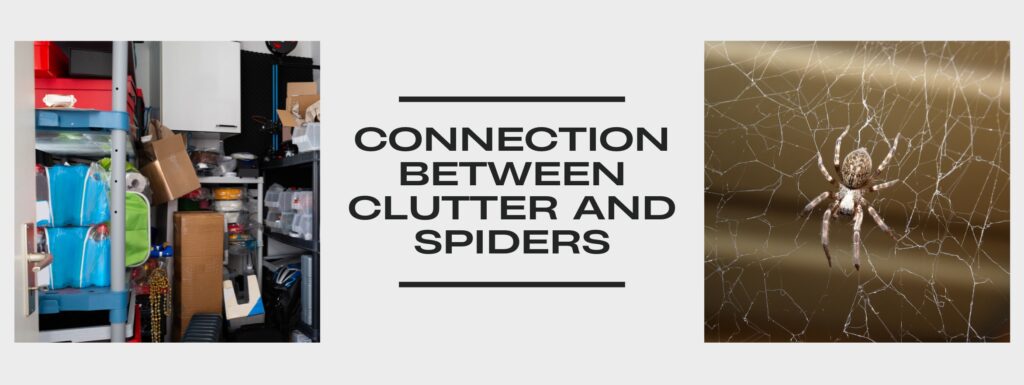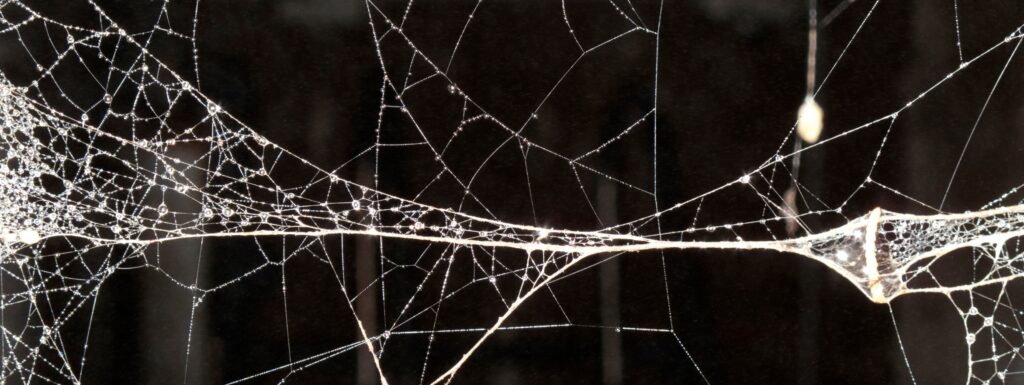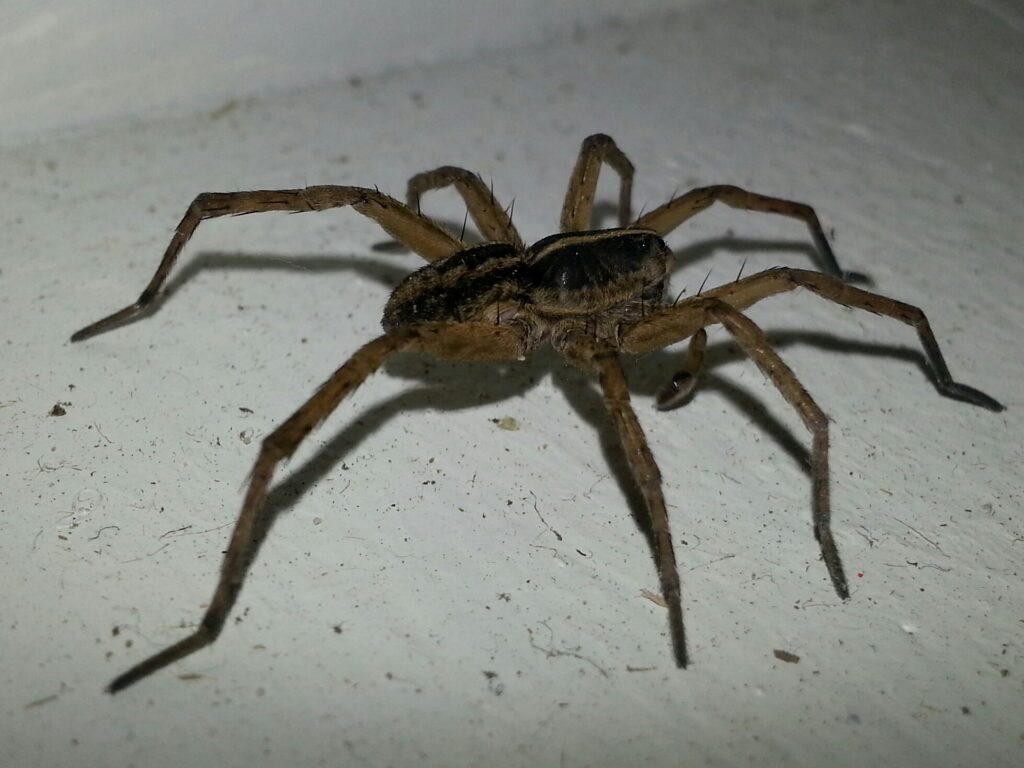 Have you ever wondered why your home, despite your best efforts, continues to attract spiders? For many, this is not just an occasional problem but a recurring nightmare. Surprisingly, one of the key factors that can turn your home into a spider haven is clutter. Yes, the very items you stack and store can provide the perfect hiding places for these eight-legged invaders. Cluttered areas make it easier for spiders to build their nests undisturbed, especially in dark, neglected corners where you least expect them.
Understanding what a spider nest looks like is crucial in spotting the early signs of an infestation. Typically, you might find silken sacs filled with eggs hidden amongst old boxes, behind furniture, or in other undisturbed places riddled with clutter. Truly Nolen Canada knows that eliminating these nests and managing clutter are essential steps in effective control. Their expertise in pest management and clutter reduction can transform your home into a less attractive target for spiders.
The rest of this guide will delve deeper into how clutter facilitates spider infestations, provide comprehensive steps on how to get rid of spider eggs, and highlight the professional services offered by Truly Nolen Canada. With a clutter-free home and effective pest control strategies, you can reclaim your space and achieve peace of mind.
Have you ever wondered why your home, despite your best efforts, continues to attract spiders? For many, this is not just an occasional problem but a recurring nightmare. Surprisingly, one of the key factors that can turn your home into a spider haven is clutter. Yes, the very items you stack and store can provide the perfect hiding places for these eight-legged invaders. Cluttered areas make it easier for spiders to build their nests undisturbed, especially in dark, neglected corners where you least expect them.
Understanding what a spider nest looks like is crucial in spotting the early signs of an infestation. Typically, you might find silken sacs filled with eggs hidden amongst old boxes, behind furniture, or in other undisturbed places riddled with clutter. Truly Nolen Canada knows that eliminating these nests and managing clutter are essential steps in effective control. Their expertise in pest management and clutter reduction can transform your home into a less attractive target for spiders.
The rest of this guide will delve deeper into how clutter facilitates spider infestations, provide comprehensive steps on how to get rid of spider eggs, and highlight the professional services offered by Truly Nolen Canada. With a clutter-free home and effective pest control strategies, you can reclaim your space and achieve peace of mind.
Why Clutter Attracts Spiders
When it comes to clutter, we're not just talking about a visual mess, but a haven for spiders and their prey. Clutter provides numerous hiding spots and ideal conditions for nesting. Dark and undisturbed, these areas allow spiders to build their nests and lay eggs without disruption. Whether it's a pile of old boxes in the garage or unused furniture stacked in the basement, each cluttered corner offers a perfect retreat for spiders to thrive. Furthermore, cluttered spaces don't just attract spiders; they become breeding grounds for other insects as well. Insects such as ants, flies, and beetles are often drawn to the same environments due to factors like moisture and darkness. These insects, in turn, serve as food sources for spiders, creating a self-sustaining cycle of infestation. A cluttered basement or attic can therefore become an all-you-can-eat buffet for spiders, making it harder to control their population once established.What Does a Spider Nest Look Like?
Spiders are fascinating creatures with unique behaviours. Generally, they seek out places that offer shelter and food. Common hiding spots include dark, undisturbed areas such as basements, attics, and garages. These places often have the ideal conditions for nest-building and are filled with potential prey, like insects. A nest can vary depending on the species, but typically, it's made of silk and resembles a webbed, cocoon-like structure. You'll find these nests in corners, behind furniture, or within piles of unused items. Recognizing these nests is crucial for effective pest management.Identifying Common Signs of Infestations
Knowing what to watch for is key to staying ahead of a spider problem. Although it may sound daunting, understanding the signs of a spider infestation can make a big difference in maintaining a pest-free home. Let's discuss some telltale indicators, places to monitor, and why our vigilance matters. One of the most evident signs of a spider invasion is the presence of webs. These intricate structures are not just nuisances but indicators of active spider activity. Often found in the upper corners of rooms, behind furniture, and within cluttered spaces, webs can signal that spiders are actively hunting for prey in your home. Additionally, discovering small, silken sacs indicates the presence of eggs. These sacs are usually hidden in dark, undisturbed areas, suggesting that spiders are breeding in your living space. Certain areas in our homes are more susceptible to spider infestations due to their clutter. Basements, attics, garages, and even closets can become prime real estate for spiders when they're filled with stacks of old boxes, papers, and unused items. These spaces offer the perfect combination of darkness and seclusion, making them ideal for spiders to build nests and lay eggs. By regularly cleaning and organizing these areas, we can reduce the likelihood of making our homes a haven for spiders and other pests.
Step-by-Step Guide to Declutter Your Home and Reduce Infestations
Decluttering is a crucial step in preventing infestations in our homes. By systematically organizing and cleaning, we can remove the conditions that make our houses attractive to these pests. Here’s a step-by-step guide to help you declutter effectively:- Start with a Plan: Before diving into the decluttering process, it's essential to have a plan. Identify the most cluttered areas in your home—typically basements, attics, and garages—and set a schedule to tackle each space.
- Sort Items into Categories: Divide the items in each cluttered area into four categories: Keep, Donate, Recycle, and Dispose. This helps to ensure that only necessary items remain, reducing potential hiding spots.
- Use Transparent Storage Bins: Replace old cardboard boxes with transparent plastic bins. These bins not only reduce moisture but also make it easier to see and organize the contents. Spiders are less likely to nest in well-sealed containers.
- Regularly Dispose of Unused Items: It’s important to routinely discard old papers, magazines, and other seldom-used items. These materials provide ideal nesting sites for spiders and other pests like ants.
- Clean and Vacuum Regularly: Maintaining a regular cleaning schedule is key. Vacuuming and dusting areas like behind furniture and in corners can help disrupt webs and nests. Don't forget to clean ceilings and under heavy furniture.
- Control Humidity Levels: Spiders are drawn to damp environments. Use dehumidifiers in areas prone to moisture such as basements and attics. This not only deters spiders but also prevents other pest infestations.
- Organize Closets and Shelving: Closets and shelving units should be kept tidy. Regularly reorganizing and dusting these areas helps to prevent them from becoming spider havens. Use airtight containers for storage when possible.
- Seal Cracks and Gaps: Inspect and seal any cracks or gaps in walls, windows, and doors. This blocks entry points for spiders and reduces their access to your home.
- Limit Outdoor Clutter: Keep the exterior of your home free from excessive clutter. Firewood, debris, and even dense vegetation near your house can create favourable conditions for spiders and other pests.
- Address Infestations Promptly: If you notice signs of an infestation, it’s important to address the issue promptly. Seek professional treatment if necessary to ensure that the problem doesn’t worsen.

